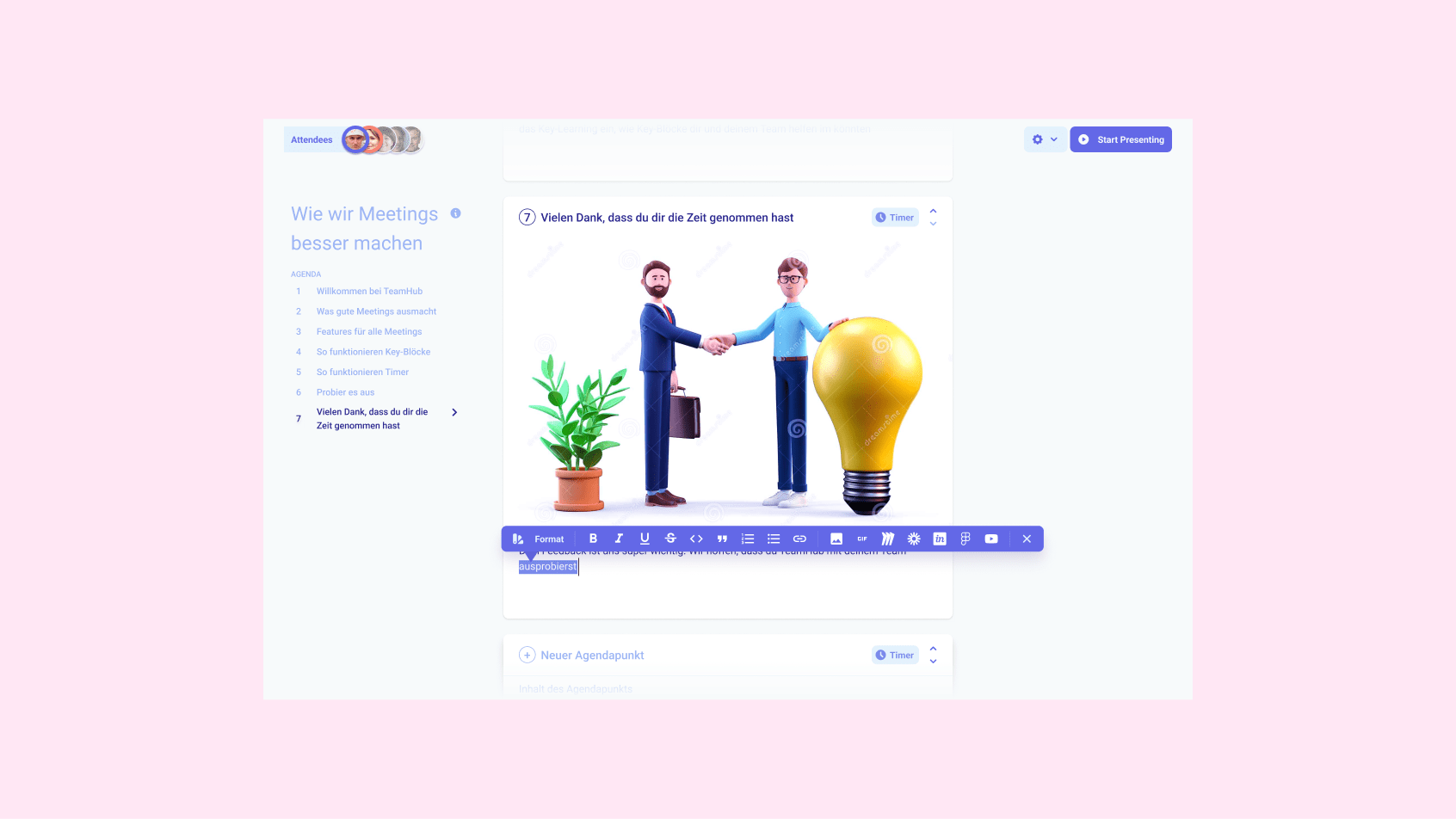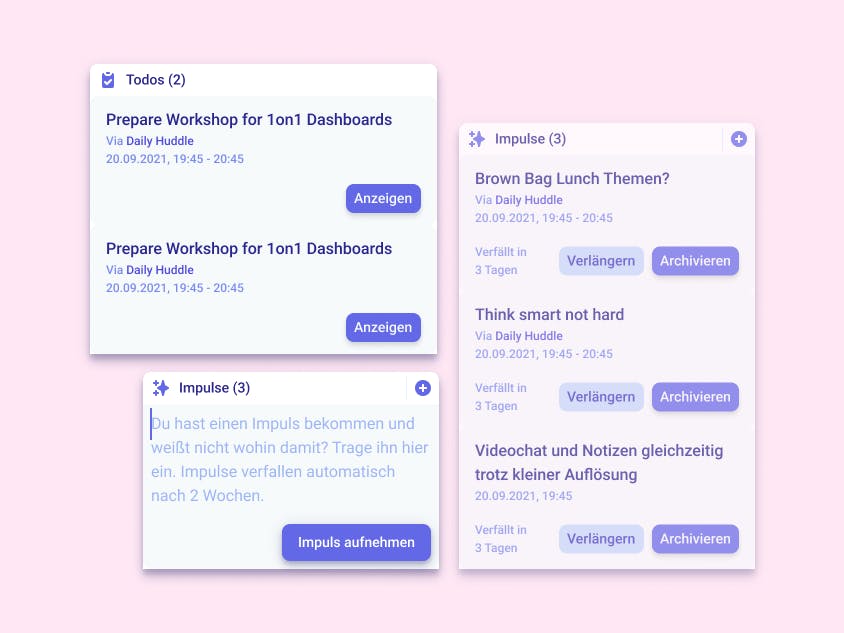Our first prototype emerged early in the exploration phase. With access to sync users' calendars to our web app, we gained much better insight into how our users planned their meetings in advance. We added an editor to prepare meetings based on the agenda, with which users could further outline individual agenda points and embed external sources like Miro, Figma, or InVision.
Together with the many user Interviews that we conducted and the insight we gained from our tool, we where able to strongly empathize with our users and were able to identify the basic pain-points and compared the different phases and actions users went through for their online meetings.



Exploring further ways to collaboratively prepare, capture, and review important information both during and outside of meetings, we defined our primary custom building blocks: Inputs, To-Dos, Key Learnings, Key Decisions, and Setting/Updating Goals together with the ability to assign collaborators.
Adding those blocks to our editor, originally for the creation of agendas, worked well and the collaborative usage of our app during out users meetings increased as well showing the acceptance of the new features.




Working with a focus on the preparation and review phases before and after meetings, we where searching for a way to create an overview over multiple meetings, especially recurring ones. The idea of seeing how captured key decisions and goals developed over time and the resonated well with the users.
For that we overview pages created a bunch of different meeting types for recurring meetings, based on the purpose, the amount and fluctuation of participants or how repetitive continuous the meetings where.
